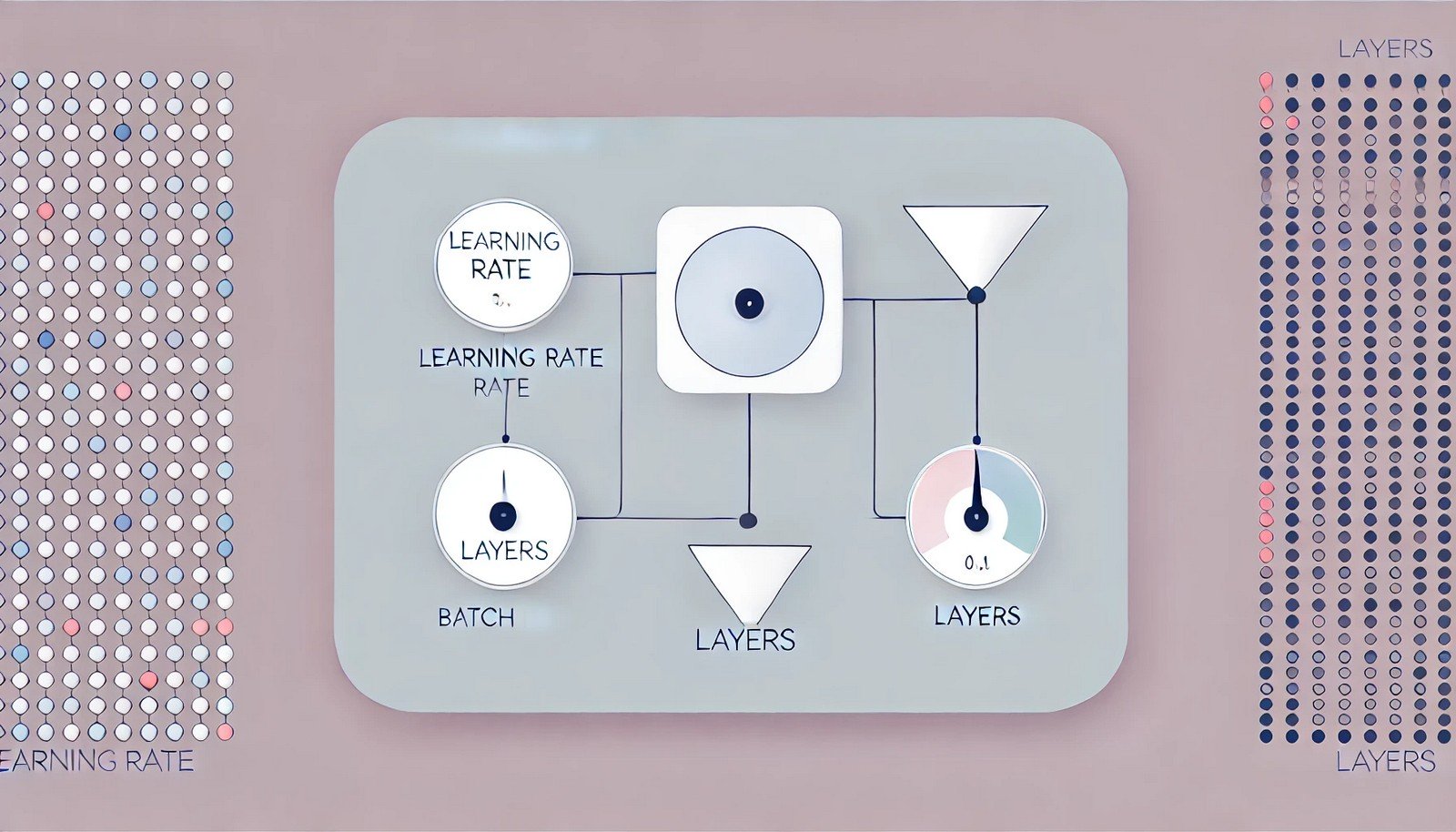Hyperparameters in AI

Quick Navigation:
- Hyperparameters Definition
- Hyperparameters Explained Easy
- Hyperparameters Origin
- Hyperparameters Etymology
- Hyperparameters Usage Trends
- Hyperparameters Usage
- Hyperparameters Examples in Context
- Hyperparameters FAQ
- Hyperparameters Related Words
Hyperparameters Definition
Hyperparameters are special parameters in machine learning and artificial intelligence (AI) models that are set before the learning process begins. They determine the structure, performance, and learning capabilities of the model by influencing aspects like the model's complexity and the rate of learning. Unlike parameters, which are learned during the training process (such as weights in a neural network), hyperparameters are external configurations that require manual tuning and impact how well a model can generalize or adapt to new data. Key examples include learning rate, batch size, and the number of layers in a neural network. Setting these correctly is crucial, as they directly influence model accuracy and efficiency.
Hyperparameters Explained Easy
Imagine you’re baking cookies. You can adjust the oven’s temperature, the baking time, and the amount of each ingredient—these are like hyperparameters in AI. Just as baking cookies can change depending on these choices, an AI model's performance changes based on hyperparameter settings. If the oven's too hot or the dough is too thick, the cookies won’t bake well. Similarly, hyperparameters help make an AI model "just right," so it performs its task accurately without overdoing or underdoing anything.
Hyperparameters Origin
The concept of hyperparameters in AI emerged from mathematical optimizations and early machine learning research in the 1950s and 1960s. As models became more complex, researchers realized that certain parameters needed to be defined before training began. The field has since evolved to use advanced techniques like grid search and Bayesian optimization to efficiently tune hyperparameters for large, complex models.
Hyperparameters Etymology
The word "hyperparameters" combines "hyper," a Greek prefix meaning "over" or "above," with "parameters," signifying values that define certain limits or guidelines in a system. "Hyper" here implies that these are overarching settings affecting how parameters within a model operate.
Hyperparameters Usage Trends
In recent years, the term "hyperparameters" has gained significant traction due to the rise of deep learning and AI, where models have numerous hyperparameters requiring careful tuning for optimal performance. Usage of the term has expanded as techniques for automated tuning have emerged, such as AutoML, which aims to simplify the process for users across industries, from healthcare to finance.
Hyperparameters Usage
- Formal/Technical Tagging: Machine Learning, Model Tuning, Optimization
- Typical Collocations: "hyperparameter tuning," "learning rate hyperparameter," "optimizing hyperparameters," "hyperparameter search"
Hyperparameters Examples in Context
"Finding the right hyperparameters for our neural network improved its accuracy by 15%."
"To speed up training, we adjusted the batch size and learning rate hyperparameters."
"Choosing the correct hyperparameters is crucial to prevent overfitting in deep learning models."
Hyperparameters FAQ
- What are hyperparameters in AI?
Hyperparameters are settings in a machine learning model that are set before training begins to control the model’s performance. - How do hyperparameters differ from parameters?
Parameters are learned during training, while hyperparameters are set before training starts and control the training process. - Why is hyperparameter tuning important?
Tuning ensures that models are as accurate and efficient as possible, avoiding overfitting or underfitting. - What is hyperparameter optimization?
Hyperparameter optimization involves finding the best values for hyperparameters to maximize model performance. - What is grid search in hyperparameter tuning?
Grid search is a method where multiple hyperparameter values are tested in a systematic grid to find the best combination. - Can hyperparameters affect model accuracy?
Yes, hyperparameters have a significant impact on model accuracy and generalization. - What are some common hyperparameters in neural networks?
Common ones include learning rate, batch size, number of layers, and dropout rate. - What is Bayesian optimization in hyperparameter tuning?
It’s a strategy that uses probability to find the best hyperparameter values more efficiently. - How is random search different from grid search?
Random search randomly selects hyperparameter values, which can sometimes be faster than grid search. - Can hyperparameters be adjusted automatically?
Yes, AutoML tools help automate hyperparameter tuning to reduce manual effort.
Hyperparameters Related Words
- Categories/Topics: Machine Learning, Model Training, Optimization
- Word Families: Hyper, Parameterization, Optimization
Did you know?
Did you know that researchers have found hyperparameter tuning to sometimes be more important than choosing the model itself? In one study, a well-tuned basic model outperformed a poorly tuned advanced model. This revelation sparked interest in AutoML, as it highlighted how impactful tuning can be on performance.
PicDictionary.com is an online dictionary in pictures. If you have questions or suggestions, please reach out to us on WhatsApp or Twitter.Authors | Arjun Vishnu | @ArjunAndVishnu

I am Vishnu. I like AI, Linux, Single Board Computers, and Cloud Computing. I create the web & video content, and I also write for popular websites.
My younger brother, Arjun handles image & video editing. Together, we run a YouTube Channel that's focused on reviewing gadgets and explaining technology.



Comments powered by CComment